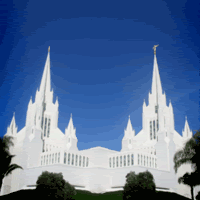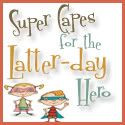Yesterday we took a road trip to Castle Dale to watch The Castle Valley Pageant. The pageant portrays the trials, triumphs and tragedies of some of the first settlers of Castle Valley, who set out to homestead this vast frontier, relying on their faith in a strange and often unwelcoming land. It was our first time to watch the pageant and we really enjoyed it, all the casts did a great job too! Here's some photos we took of the pageant.
After the pageant was over, the audience was welcome to visit with the cast in the set.

With Abe, Neva & Neva's sister

with the Indian
A "pioneer village" exhibit, presented before the pageant begins, instructs visitors on the skills required to survive as a pioneer. There were a lot of activities such as blacksmithing, farming with horse-drawn implements, weaving, spinning and a lot more.
Since it's a long drive to Castle Dale (a little over 3 hours) we decided to do some sightseeing and we stopped at some museums on the way. Our first stop was the Western Railroad & Mining Museum in Helper Utah.
The Western Mining and Railroad Museum is located in the small town of Helper, Utah, two hours southeast of Salt Lake City, named so because of the engines required to help the trains climb the steep grades to Soldier Summit. The Denver and Rio Grande Railroad established the town when the railroad came through the area and coal, that was needed to fuel the steam engines, was found. By 1891 the depot, roundhouse and a hotel were built and the town was beginning. As more coal mines were opened it became the railroad center and the "hub" for coal miners and their families from the many mining camps. The camps were full of European and Asian immigrants and some of them came into Helper to build the town. This is the story told by the Western Mining and Railroad Museum.
Here's some picture we took The Western Mining and Railroad Museum. Have fun!
Our next stop was the College of Eastern Utah Prehistoric Museum in Price Utah.
The Prehistoric Museum was established in 1961 as a cooperative effort by the College of Eastern Utah and the community of Price. On May 8, 1961 the Board of Regents established the museum. At that time funding for the museum was supplied by the geology department at the college. The museum officially opened to the public on June 3, 1961, on the second floor of the Price Municipal Building in a small converted conference room. After expanding into the hallways of the City Hall it moved into the old city gymnasium in 1971. In later years, the museum became an appropriated line item through the State of Utah. In 1990-91, the appropriation for the museum was greatly increased because of the tremendous expansion of the museum. A new addition was opened, later to become the Hall of Dinosaurs. Through these two separate expansions during its 45-year history, the museum has become a 25,000-square-foot (2,300 m²) facility with another 6,000-square-foot (560 m²) repository and paleontology preparation laboratory. An ongoing program of paleontology fieldwork and excavation begun in 1990 has produced 12 new species of dinosaurs and over 7,000
paleontologic specimens. Federal and state accreditation followed in 1991, allowing the museum to
reposit collections from across Utah. Renewed interest in dinosaurs and a popular culture boom brought thousands more visitors down the
Dinosaur Diamond Scenic Byway and to the museum in the 1990s. New development in
Utah and the renaissance in dinosaur research has resulted in huge new finds and exciting new levels of interest. The museum now serves as an important repository housing over 750,000 prehistoric specimens from around the state.
Here's the pictures we took..
Our third stop was the Museum Of The San Rafael in Castle Dale.
Learn about the exhibits in the Museum of the San Rafael
Dinosaurs
The Museum of the San Rafael will reveal secrets to you, secrets hidden from casual outdoor observers. Only those who have searched the rugged hills of Emery County for fossils have known the wonders displayed in the museum's William Lee Stokes Hall. A replica of a fossilized dinosaur egg believed to contain an embryo, the skeletons of Allosaurus, Chasmosaurus, and Alpertosaurus, the great skull of Tyrannosaurus Rex - all tell the story of a past world long buried in the soils of the present. Giant footprints, claws, teeth and bones speak of creatures that vanished millions of years ago but left their remains to excite the curiosity of humankind.
Early Humans
Within the inner circles of the Museum of the San Rafael's Great Exhibit Hall are traces of a people who flourished in the San Rafael area, then vanished. The Fremont Indians left behind only implements of daily living and their art painted and pecked on the cliffs. Some of the most unique archaeological finds in the U.S. have been found in the caves and rock ledges of Emery County. Scientists have studied the artifacts hoping to probe the mysteries of the ancient culture. Skilled artisans shaped the baskets, pots projectile points, yucca ropes and leather bundles. What became of these people? The Museum of the San Rafael holds the clues.
Wild Animals
Venture into the mountains and deserts of Emery County is bound to bring you into the world of nature, but few people are observant enough to see all that nature holds. In the outer circle of the Museum of the San Rafael's Great Exhibit Hall, you can see animals in their natural habitat, animals you may never come near in a lifetime. Each animal is an exquisite example of the art of taxidermy. Whether a majestic bull elk, a huge mountain lion giving chase to a buck deer, or the snakes and lizards of the San Rafael Swell, each display shows in detail the beauty of nature's creatures. Nearby, your children can indulge their need to touch at a display created especially for them.
After going to the Museum Of The San Rafael we went to the Pioneer Museum just right across the street from the Museum Of The San Rafael.
Located in Castle Dale, the heart of Castle County, the museum shows a pioneer school room, farm equipment, a kitchen setting, country store and much more. One of the most interesting rooms in the museum is the "Red Room." It contains a beautiful organ and furniture the Johnson family purchased from the Utah State capitol when it was refinished. There is a fine arts exhibit of remarkable pioneer needlework.
Rougher cowboys called these parts home too. The museum has created a special exhibit on local outlaws. One of the most famous outlaws, Butch Cassidy, is highlighted.
The experience doesn't have to stop at viewing pioneer artifacts. The museum has archives of pioneer stories.
From the pioneer museum we went straight to Huntington State Park & Huntington Reservoir.
Huntington State Park, off State Highway 10, is a park surrounding Hunting Reservoir. Its lake is waiting for boating, water sports, fishing and relaxing under huge shade trees. The reservoir is one of Utah's finest warm water fisheries. Only 10 minutes from high mountain country on one side and intense desert beauty on the other, this park offers a central location to experience the best of Castle Country. The spacious campgrounds around the reservoir are an oasis in the desert.
Huntington North Reservoir
Location: in Emery County, just two miles north of Huntington and 20 miles south of Price. Follow State Highway 10 to the well-signed turnoff for Huntington State Park.Types of fish: Large mouth bass, bluegill and crawdad fishing is popular, especially with the children. Trout may also be caught, especially in spring and fall.When to fish: Bass, bluegill and catfish are often located around structures, such as docks, submerged trees and emergent aquatic plants. These species are most readily caught in summer months. Trout are more likely to be caught in open water or around the rocky dam, especially in spring and fall.Facilities: Boat ramp, boat docks, beaches, campground, picnic sites, group pavilion, drinking water, modern restrooms, hot showers and sanitary dump station. There is a fee to enter the park.
We ate our dinner (Subway Sandwiches) there and goofed around before it's time to go see the Pioneer Village and the pageant. Russ tried fishing there but was out of luck. We played Apples to Apples and Andrew and Jessica had fun rolling in the grass.
The pageant was done at 10:00pm and it took us a few minutes to get out of the area because of the crowd. We arrived home about 2:15 am. It was a long day especially for Russ since he's the one one driving but it was fun for all of us. It's good to spend some quality time together as a family. I'm especially grateful we have our CNG van we can use to run around without spending too much money for gas. Thanks for taking the time to stop by at my blog.. Have a nice day!












